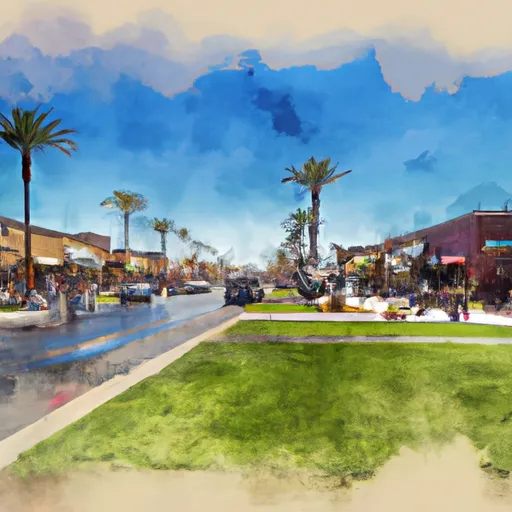-
 Snoflo Premium
Snoflo Premium
Get unlimited access to all our content
With no Ad interruptions! - Start Your Free Trial Login with existing account
Coachella
Eden Index
Climate
6.9
•
Recreation
3.1
•
Community
1.5
•
Safeguard
4.2/10

Coachella is a city in Riverside County, California, located in the Sonoran Desert. The climate is hot and dry, with temperatures reaching up to 110°F in the summer. The city relies on groundwater as its primary source of water, with constituents including nitrates, arsenic, and fluoride. Outdoor recreation opportunities in Coachella include hiking, camping, and off-road vehicle use in nearby parks and wilderness areas, such as Joshua Tree National Park and the Santa Rosa and San Jacinto Mountains National Monument. Additionally, the city hosts the annual Coachella Valley Music and Arts Festival, which draws thousands of visitors to the area each year.
What is the Eden Index?
The Snoflo Eden Index serves as a comprehensive rating system for regions, evaluating their desirability through a holistic assessment of climate health, outdoor recreation opportunities, and natural disaster risk, acknowledging the profound impact of these factors on livability and well-being.
Climate Health Indicator (CHI): 6.9
Coachella receives approximately
85mm of rain per year,
with humidity levels near 74%
and air temperatures averaging around
23°C.
Coachella has a plant hardyness factor of
9, meaning
plants and agriculture in this region tend to thrive here all year round.
By considering the ideal temperature range, reliable water supplies, clean air, and stable seasonal rain or snowpacks, the Climate Health Indicator (CHI) underscores the significance of a healthy climate as the foundation for quality living.
A healthy climate is paramount for ensuring a high quality of life and livability in a region, fostering both physical well-being and environmental harmony. This can be characterized by ideal temperatures, reliable access to water supplies, clean air, and consistent seasonal rain or snowpacks.
Weather Forecast
Streamflow Conditions
Salton Sea
Area Rivers
Salton Sea
Snowpack Depths
Salton Sea
Reservoir Storage Capacity
Salton Sea
Groundwater Levels
Recreational Opportunity Index (ROI): 3.1
The Recreational Opportunity Index (ROI) recognizes the value of outdoor recreational options, such as parks, hiking trails, camping sites, and fishing spots, while acknowledging that climate plays a pivotal role in ensuring the comfort and consistency of these experiences.
Access to outdoor recreational opportunities, encompassing activities such as parks, hiking, camping, and fishing, is crucial for overall well-being, and the climate plays a pivotal role in enabling and enhancing these experiences, ensuring that individuals can engage in nature-based activities comfortably and consistently.
Camping Areas
| Campground | Campsites | Reservations | Toilets | Showers | Elevation |
|---|---|---|---|---|---|
| Black Rock - Joshua Tree National Park | 100 | 3,962 ft | |||
| Painted Canyon | None | 566 ft | |||
| White Tank - Joshua Tree National Park | 15 | 3,807 ft | |||
| Ryan - Joshua Tree National Park | 31 | 4,319 ft | |||
| Rockhouse Canyon Rd Dispersed | None | 639 ft | |||
| Box Canyon Dispersed | None | 258 ft | |||
| Hidden Valley - Joshua Tree National Park | 44 | 4,222 ft | |||
| Jumbo Rocks - Joshua Tree National Park | 125 | 4,347 ft | |||
| Belle - Joshua Tree National Park | 18 | 3,858 ft | |||
| Lake Cahuilla County Park | 56 | 2 ft |
Catastrophe Safeguard Index (CSI):
The Catastrophe Safeguard Index (CSI) recognizes that natural disaster risk, encompassing floods, fires, hurricanes, and tornadoes, can drastically affect safety and the overall appeal of an area.
The level of natural disaster risk in a region significantly affects safety and the overall livability, with climate change amplifying these risks by potentially increasing the frequency and intensity of events like floods, fires, hurricanes, and tornadoes, thereby posing substantial challenges to community resilience and well-being.
Community Resilience Indicator (CRI): 1.5
The Community Resilience Indicator (CRI) recognizes that education, healthcare, and socioeconomics are crucial to the well-being of a region. The CRI acknowledges the profound impact of these elements on residents' overall quality of life. By evaluating educational resources, healthcare accessibility, and economic inclusivity, the index captures the essential aspects that contribute to a thriving community, fostering resident satisfaction, equity, and social cohesion.

